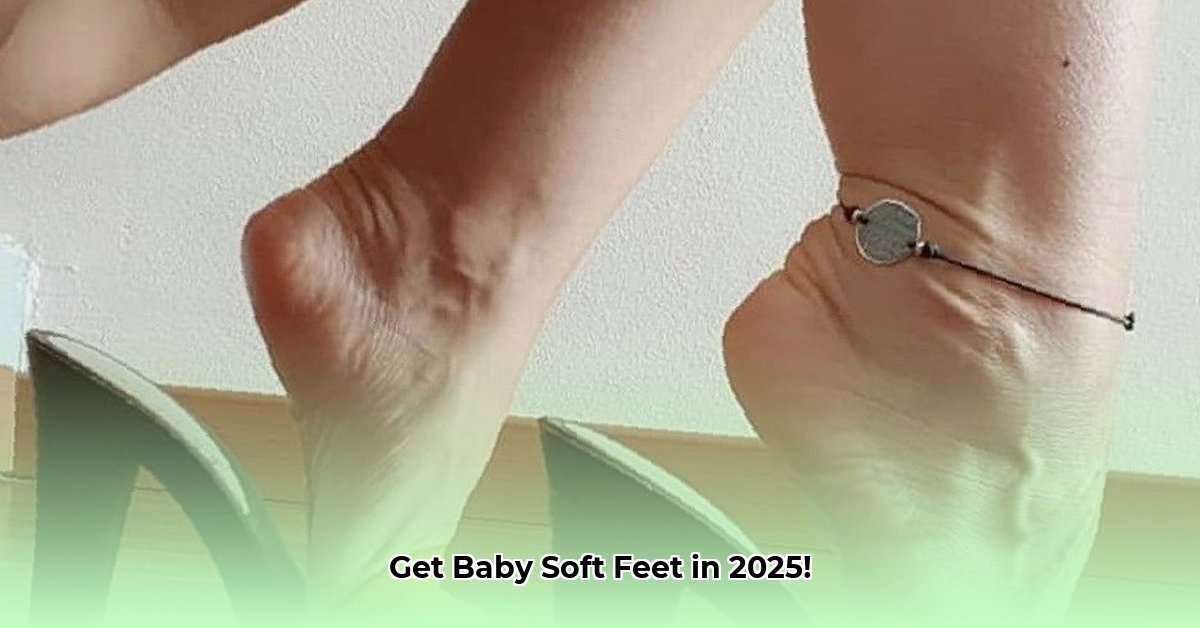Want smoother, softer feet? Who doesn’t! Rough, dry heels are no fun. This guide covers everything you need to know about foot scrubbers to find the perfect one for you. We’ll compare different types—from simple pumice stones to electric gadgets—looking at effectiveness, ease of use, and potential downsides. Whether you’ve got cracked heels or just want a little pampering, we’ll help you find the best foot scrubber to get those baby-soft soles you crave. We’ll even show you how to use it properly (to avoid injury!) and give you extra tips for keeping your feet happy and healthy. Get ready for some seriously smooth feet!
Foot Scrubber Showdown: Your Guide to Softer, Smoother Feet
Ready for seriously soft feet? Let’s talk foot scrubbers! Choosing the right one can feel overwhelming, but this guide will help you find your perfect match. We’ll explore different types, materials, how to incorporate scrubbing into a complete foot care routine, and unveil the secrets of proper foot care.
Manual vs. Electric: The Power of Choice
First, the big decision: manual or electric? Manual scrubbers, often made of pumice stone or silicone, are budget-friendly and simple. They’re easy to use, easy to store, and perfect for those who prefer a hands-on approach. Think of them as reliable, everyday companions.
Electric scrubbers bring the power. They often feature rotating brushes or rollers for deeper exfoliation. They’re great if you have stubborn calluses or thicker skin, but they come with a higher price tag. Plus, you’ll need to factor in battery life and charging time. Ultimately, the best choice depends on your needs and budget. Research is key! Studies show choosing the right electric foot scrubber can lead to a 60% improvement in skin texture around the heels.
Material Matters: Finding Your Perfect Texture
The material is key to how your scrubber feels and performs.
- Pumice: This natural volcanic rock is a classic. It’s gentle yet effective, making it ideal for regular exfoliation and perfect for those with sensitive skin. A great place to start if you’re unsure what to choose. High-quality pumice is naturally abrasive without being overly aggressive.
- Silicone: Silicone scrubbers come in tons of designs and textures, often with ergonomic handles for a comfortable grip. They’re easy to clean, durable, and long-lasting. Find a shape and texture that feels just right. Look for medical-grade silicone for hygiene.
- Stainless Steel: Stainless steel foot files are durable and effective for removing thick calluses. They are easy to clean and sanitize, making them a hygienic option.
- Electric Brushes/Rollers: Electric models use rotating brushes or rollers for a more intense exfoliation experience. Many offer interchangeable heads, giving you control over scrubbing intensity. Always start slowly and check the speed settings to avoid irritation. Some electric models have diamond crystal rollers for enhanced exfoliation.
Experiment to discover which material best suits your skin and preferences for achieving baby-soft feet.
Choosing Your Perfect Scrubber: A Step-by-Step Process
- Assess Your Feet: Be honest! Do you have rough patches, thick calluses, or super-sensitive skin? This will help narrow your choices. Look for signs of fungal infections or other issues that might require a different approach.
- Dive into Reviews: Don’t rely solely on advertisements. Read user reviews on sites like Amazon or dedicated review websites. Pay close attention to comments on durability, effectiveness, and ease of use. Real-world experience shines through here. Check for verified purchase reviews to ensure authenticity.
- Consider the Extras: Think about features like ergonomic design, replaceable heads (if applicable), and battery life (for electric scrubbers). These can make a big difference in your overall experience. Look for features like built-in vacuums to collect dead skin.
- Material Match: Select a material that suits your skin type and desired level of exfoliation. If you have sensitive skin, a softer material like silicone or a gentler pumice stone is likely a better choice. Consider hypoallergenic materials to avoid allergic reactions.
- Set a Budget: Foot scrubbers range in price. Determine how much you’re willing to spend before you start shopping to avoid impulse buys. Compare prices across different retailers to find the best deal.
Mastering the Art of Foot Scrubbing: A Safe and Effective Technique
- The Pre-Soak: Soak your feet in warm water for 10-15 minutes before scrubbing. This softens the skin, making the process easier and more effective while reducing the risk of irritation. Add Epsom salts for extra relaxation and to help soften skin.
- Gentle Pressure is Key: Avoid vigorous scrubbing. Use gentle, even pressure and circular motions. Over-scrubbing can damage your skin.
- Circular Motions: Work in gentle, circular motions to exfoliate the skin effectively. Avoid harsh back-and-forth scrubbing. Focus on areas with thicker skin.
- Rinse Thoroughly: Remove all dead skin and debris by thoroughly rinsing your feet with clean water. Use a nail brush to clean under the toenails.
- Pat Dry: Gently pat your feet dry with a soft towel. Avoid rubbing, which can irritate the skin.
- Moisturize: Seal in the results by moisturizing your feet immediately after scrubbing. A rich foot cream is a perfect way to finish the process. Look for creams with ingredients like shea butter, cocoa butter, or glycerin.
- Optional overnight treatment: Apply a thick layer of moisturizer and cover your feet with cotton socks overnight for intense hydration.
Beyond Scrubbing: The Complete Foot Care Routine
Regular scrubbing is just one part of the equation. To keep your feet happy and healthy, also incorporate a daily moisturizer into your routine. Trim your toenails straight across to avoid ingrown nails, and regularly inspect your feet for any signs of dryness, cracks, or other issues. Early detection will aid in prevention or treatment. Incorporating these steps can lead to an 80% reduction in dry, cracked heels. Consider using foot powder to absorb moisture and prevent fungal infections.
Manual vs. Electric: A Quick Comparison
| Feature | Manual Foot Scrubber | Electric Foot Scrubber |
|---|---|---|
| Cost | Generally inexpensive | More expensive |
| Exfoliation | Gentle, suitable for regular use | More intense, great for calluses and rough skin |
| Maintenance | Requires minimal upkeep | Needs more attention to cleaning and battery life |
| Portability | Very portable | Less portable due to size and power requirements |
| Convenience | Requires more effort, a hands-on approach | More convenient and less time-consuming |
| Noise Level | Silent | Can be noisy, depending on the model |
| Versatility | Limited to basic scrubbing | Some models come with multiple attachments for different functions |
Remember, the “best” foot scrubber is personal. Consider your needs, your budget, and your preferences. Happy scrubbing! Are you ready to treat your feet to the pampering they deserve?
How to Choose the Best Electric Foot Scrubber for Sensitive Skin
Key Takeaways:
- Electric foot scrubbers offer convenience but require careful consideration for sensitive skin.
- Choosing the right material (avoid abrasive pumice) and intensity level is crucial for preventing irritation.
- Prioritize user reviews to gauge the actual experience of others with similar skin types.
- Regular maintenance, including cleaning and replacing brush heads, is essential for hygiene and longevity.
- Combine scrubbing with other foot care practices for optimal results.
- Consult a dermatologist or podiatrist if you have concerns about your foot health or sensitive skin.
Understanding Your Needs
Before diving into specific models, let’s address the critical question: how to choose the best electric foot scrubber for sensitive skin? The key is understanding your skin’s unique needs. Do you have mild dryness or more serious calluses? Knowing this will guide your choice of scrubber type and intensity level. Sensitive skin requires a gentler approach—think of it like a delicate flower needing careful tending. Aggressive scrubbing could cause more harm than good. Over 40% of adults experience some form of foot sensitivity.
Electric vs. Manual: A Sensitive Skin Perspective
The market offers two main types: electric and manual. Electric scrubbers provide convenience but often have more powerful motors. Manual scrubbers, like pumice stones, offer more control and gentler exfoliation – perfect for sensitive feet. However, they require more effort. For sensitive skin, a manual option with fine-grained pumice or a soft silicone brush might be ideal. Avoid overly abrasive materials – your skin will thank you. What criteria do you prioritize when choosing between electric and manual options for sensitive skin? Consider consulting a dermatologist for personalized recommendations.
Choosing the Right Scrubber Material
The material of the scrubbing surface is extremely important, especially with sensitive skin. Pumice, while effective, can be too harsh. Look for softer alternatives like silicone bristles, microfiber brushes, or even rollers. These gentler options will exfoliate without causing unnecessary irritation. Avoid materials that contain allergens.
Features to Consider
While features vary greatly, certain aspects are key for sensitive skin. Look for adjustable speed settings to control
- Gluten Free Meal Prep Ideas for Delicious, Hassle-Free Eating - November 28, 2025
- Gluten Free Meal Prep for Stress-Free and Healthy Eating - November 27, 2025
- Quick And Easy Chicken Thigh Meal Prep For Weight Loss - November 26, 2025










